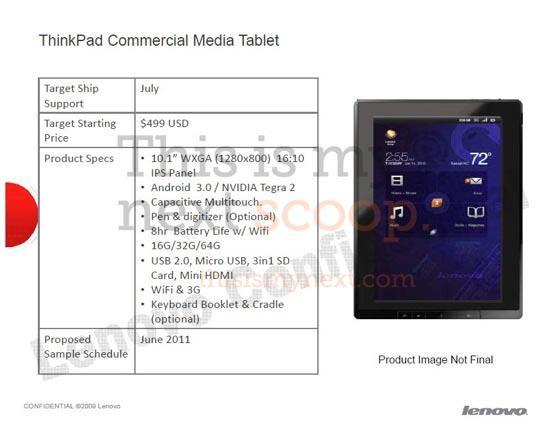
Honeycomb is still a new mobile OS, and so it hasn’t started appearing on every single tablet out there quite yet. That’s likely to change in the coming months, though, as more manufacturers jump on the OS that’s aimed specifically for tablets. One of those manufacturers, Lenovo, even made it clear at the end of 2010 that they wouldn’t be launching an Android-powered tablet of their own until they could get their hands on Honeycomb. They’ve stuck to their guns, too, as the first leak of a Lenovo-branded tablet just broke the surface, and the tablet won’t be making an appearance until later this year. With Honeycomb, or Android 3.0 on board, I’m wondering if the tablet-oriented OS will have the same hurdles as the smartphone version of Android: the software updates.
As of right now, there’s only one version of Android 3.0 available for tablets. And right now, that means there isn’t anything like “fragmentation” happening with the tablets running the tablet-specific mobile OS. Sure, there are Android-powered tablets out there running earlier versions of Android, but those aren’t the tablet-specific versions of the mobile OS, so we’re not going to count them. We’re using 3.0 as our base, and moving on from there.
The Lenovo ThinkPad is set to launch with Android 3.0 in either July or August. That, in all honesty, isn’t too far away from now, but there’s no telling if Google has an update for Honeycomb coming out before that. If the update process for Honeycomb is anything like we’ve seen with the smartphone version of Android, then it’s certainly possible that before August, and subsequently before the launch of the ThinkPad, there’s a newer version of Honeycomb available for tablets. And while the Motorola XOOM will obviously get an update (along with every other Honeycomb-running tablet that’s missing a proprietary skin), the ThinkPad will already be one step behind out of the gate.
And, could we start seeing that all over again, this time just for tablets? It’s certainly possible. With a staggered release date of so many products, it would seem almost impossible to keep them all in line with whatever software version is coming down the pipe from Google. It only further complicates the issue when manufacturers like HTC and Lenovo are throwing their own user interface skins onto the devices, which we’ve seen complicate the upgrading process for Android-powered smartphones in the past.
Obviously, Google has the ability to make sure that something like this doesn’t get out of hand. While it’s not up to them to figure out when every single new tablet is launching from manufacturers, they can keep updates steady, and let manufacturers know when these updates are coming out, so tablets can be appropriated with the most recent version of the mobile OS right from the start, or updated properly. The fragmentation argument for Android has been a loud and vicious one for quite some time, and right now Honeycomb for tablets can either break that trend, or make it even more prevalent in the months to come.
Do you think Google will be making the effort to fight fragmentation with Android 3.0 and tablets? Or do you think they’ll stick to their old ways and continue to launch software updates that miss devices entirely, forcing the fragmentation issue to pop back up again? Let me know in the comments below.